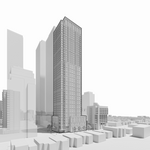salsa
Senior Member
Enough already with the former municipal boundaries. This is Toronto. This whole notion that Scarb is "getting the short end of the stick" just because it has less subway stops than the inner city is absurd. There comes a point when long subway rides from the suburbs becomes too inefficient, so that's what commuter rail is for. I don't understand why subway supporters want a crowded subway ride that stops at every Castle Frank, Chester and Greenwood station, instead of enjoying a fast comfortable ride to downtown in just 25 minutes or less. I wish I could do that in North York.
According to your graph, we ought to build subways in Etobicoke North so that it's more fair. Please graph rapid transit length. Subways are not the only measure of good transit.
So excluding the SRT - and prior to the SSE debate - Scarb had the lowest existing/planned level of subways per capita - even lower than a combined Vaughan + Markham. Per area it was still behind Etobicoke (but ahead of Vaughan + Markham). However including SSE, Scarb will have the third most subway coverage per area and pop - behind North York, but way ahead of Etobicoke. This was put together slapdash, so if anyone sees any errors don't hesitate to point them out.
According to your graph, we ought to build subways in Etobicoke North so that it's more fair. Please graph rapid transit length. Subways are not the only measure of good transit.
Last edited:





